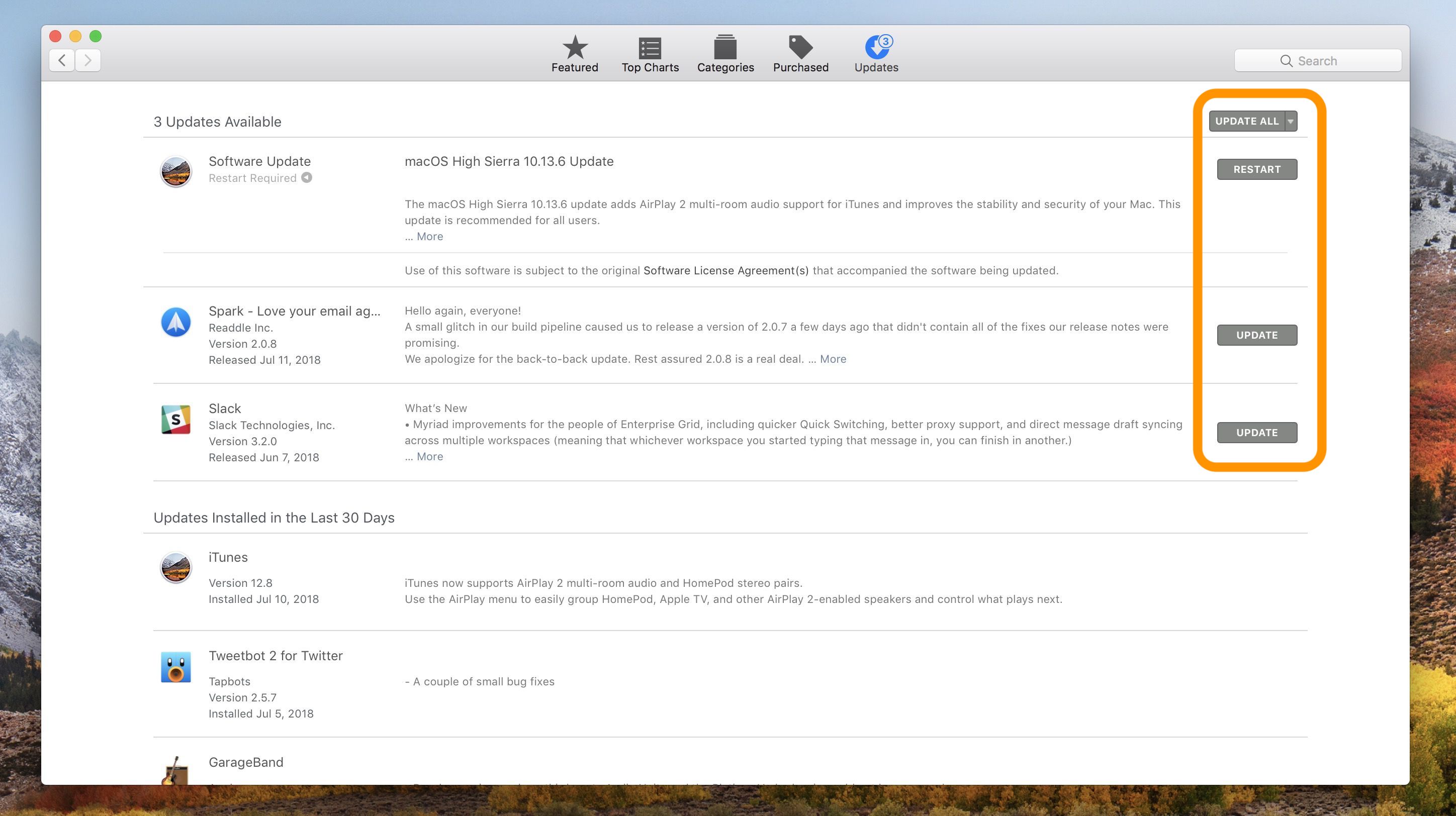If you're sick of waiting for the progress bar to complete every time you reboot after a macOS software update, then you'll be pleased to learn there's another way to update your Mac that could potentially reduce your downtime.
How to check for macOS software updates in Mojave macOS Mojave changes how you update macOS. No more visiting the Mac App Store everytime you want to check for something new. Jul 04, 2019 How to Update Outlook on PC or Mac - Using Outlook for Mac Open Microsoft Outlook on your computer. Click the Help tab. Click Check for Updates. Select Manually in the AutoUpdate window. Click the Check for Updates button.
The process involves a simple Terminal command, and allows you to continue using your Mac as the update downloads and the initial software installation takes place in the background. In our tests, we found that this method was capable of shaving off several minutes of idle time during installation restarts, but that the time-saving depends on the machine and the update in question.Users with older Macs in particular will likely appreciate this tip, as it saves having to fire up the Mac App Store altogether, which can be slow-going and sometimes even downright unresponsive. Read on to find out how it's done.
How to Update macOS From the Command Line

Before following these steps, ensure you have a full backup of your system, which should be par for the course when performing any update. Note that the following procedure only lists stock Apple system updates (iTunes, Photos, printer drivers the like), but not updates for other Apple apps that aren't installed with macOS (Xcode, for instance), and not third-party updates from the Mac App Store.
- To update macOS from the command line, first launch Terminal, which can be found in the Applications/Utilities folder. This will open a Terminal window and a command prompt for you to begin typing.
- Input the following command and press Enter: softwareupdate -l
- Wait as your Mac searches Apple's servers for any macOS software updates currently available for your system. If no updates are available, you'll be returned to the command prompt.
The asterisked line denotes the individual software update package that's available for your Mac to download. This line is also known as the identifier.
The second line offers a more detailed description of the update, including the version number (usually in brackets) and the download file size in kilobytes. [Recommended] means the update is recommended for all users, and [restart] indicates that your Mac needs to reboot for installation to complete.
To download and install a specific update in the list, use the following format, but replacing NAME with the update's identifier:
softwareupdate -i NAME
Or:
softwareupdate --install NAME
Note that if the package name you’re trying to install has spaces in it, you'll need to enclose the whole thing in single quotes. So for example:
softwareupdate --install 'macOS High Sierra 10.13.3 Supplemental Update-'
Also, be alert for spaces at the end of the package names. If present, they also need to be included within the quotes.
Moving on, to download a specific update for your system without also installing it then and there, you can use:

softwareupdate -d NAME
Updates downloaded in this way can be subsequently installed with the same -i or --install command above, or even through the Mac App Store. These updates are downloaded to a folder located in /Library/Updates, but they aren't designed to be installed by double-clicking the packages in that directory. You'll need to use the --install command or visit the Mac App Store to actually initiate the install.
Lastly, to download and install all available updates for your system, type the command:
softwareupdate -i -a
Using these commands, you'll be able to leave the update to download and continue to install in the background while you get on with other things. All being well, Terminal will eventually prompt you to restart your machine manually so that the full installation procedure can complete. (Note that the softwareupdate utility requires admin authentication for all commands except the -l or -list command. If you run softwareupdate as a normal admin user, you will be prompted for a password where required.)
As some users will no doubt be aware, there are several additional options that can be used in conjunction with the softwareupdate utility. For example, -schedule on/off enables/disables your Mac's scheduled background check for updates. More adventurous readers can use
How To Check For Mac System Updates
 man softwareupdate and softwareupdate -h for a summary list of commands.
man softwareupdate and softwareupdate -h for a summary list of commands. Guides
Upcoming
Front Page Stories
How To Check For Mac Software Updates
Apple TV+ Offers Highest Quality 4K Streaming, Averaging Up to 29Mbps
AirPods Pro vs Powerbeats Pro
15 hours ago on Front PageApple Releases New Trailer for Original Film 'The Banker' With Anthony Mackie and Samuel L. Jackson
21 hours ago on Front PageMicrosoft Introduces Unified Office App for iOS and Android
22 hours ago on Front PageAdobe Launches Photoshop for iPad
23 hours ago on Front PageApple Commits $2.5 Billion to Fight California Housing Crisis
1 day ago on Front PageDigiTimes: Apple Partnering With Valve to Develop AR Headset
1 day ago on Front PageAd Data Points to Apple's 'Slow Roll' Promotion of Apple TV+
2 days ago on Front Page
• Goldman Sachs Issued $10 Billion in Credit Lines for Apple Card(216)
How To Check For Microsoft Updates Mac
• Hands-On With the New Apple TV+ Streaming Service(185)
• Apple Seeks Tariff Waivers on iPhone Components, Apple Watch, AirPods and More(102)
• Apple Shares Official Trailer for 'Ghostwriter' Show Now Available on Apple TV+(18)
• Five New Games Added to Apple Arcade, Including 'The Mosaic'(44)
• Apple Watch Competition to Grow as Google Plans Its Own Wearables Following Fitbit Acquisition(182)
• Apple TV+ Streaming Service Launches With 'Dickinson,' 'For All Mankind,' 'See' and More(292)